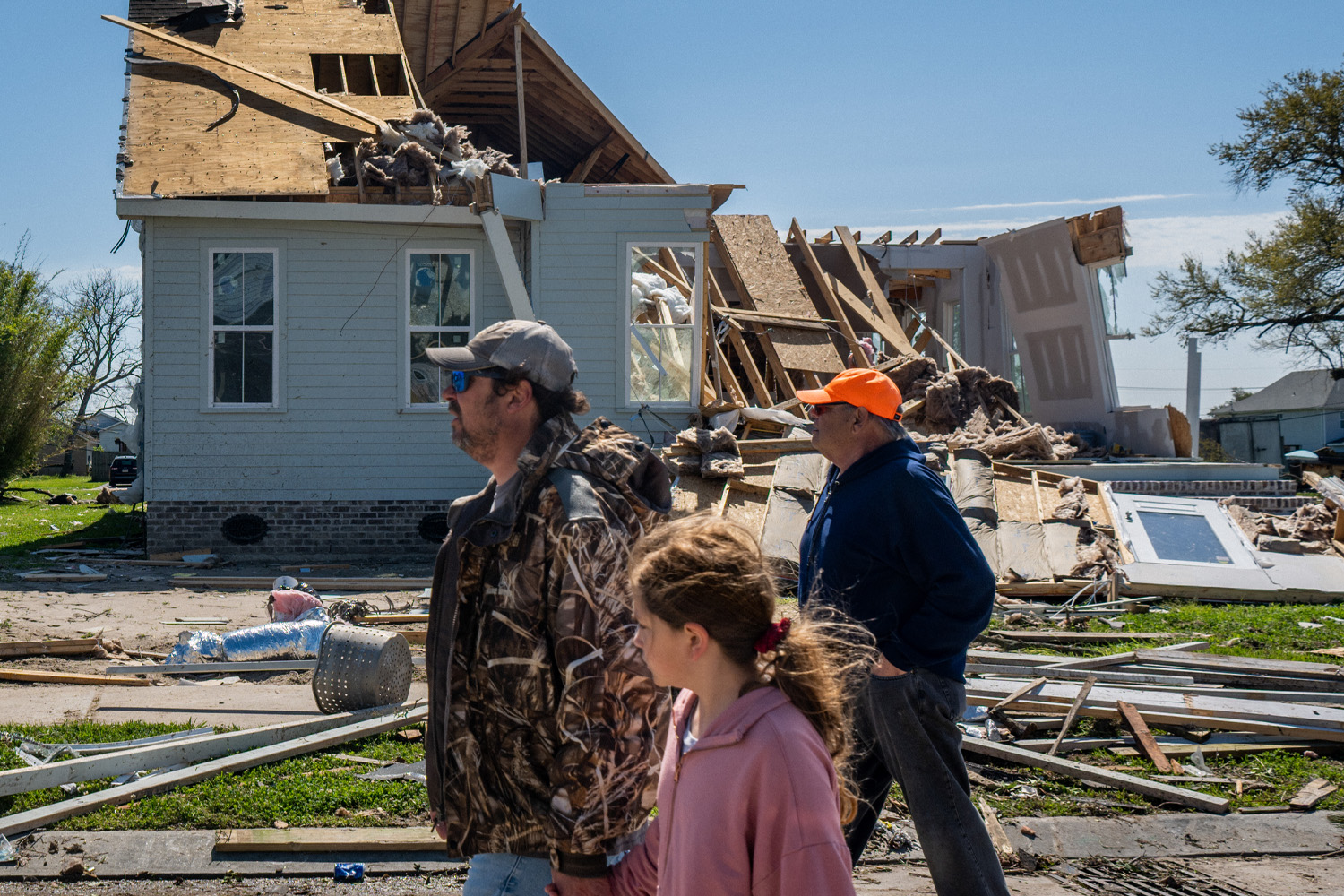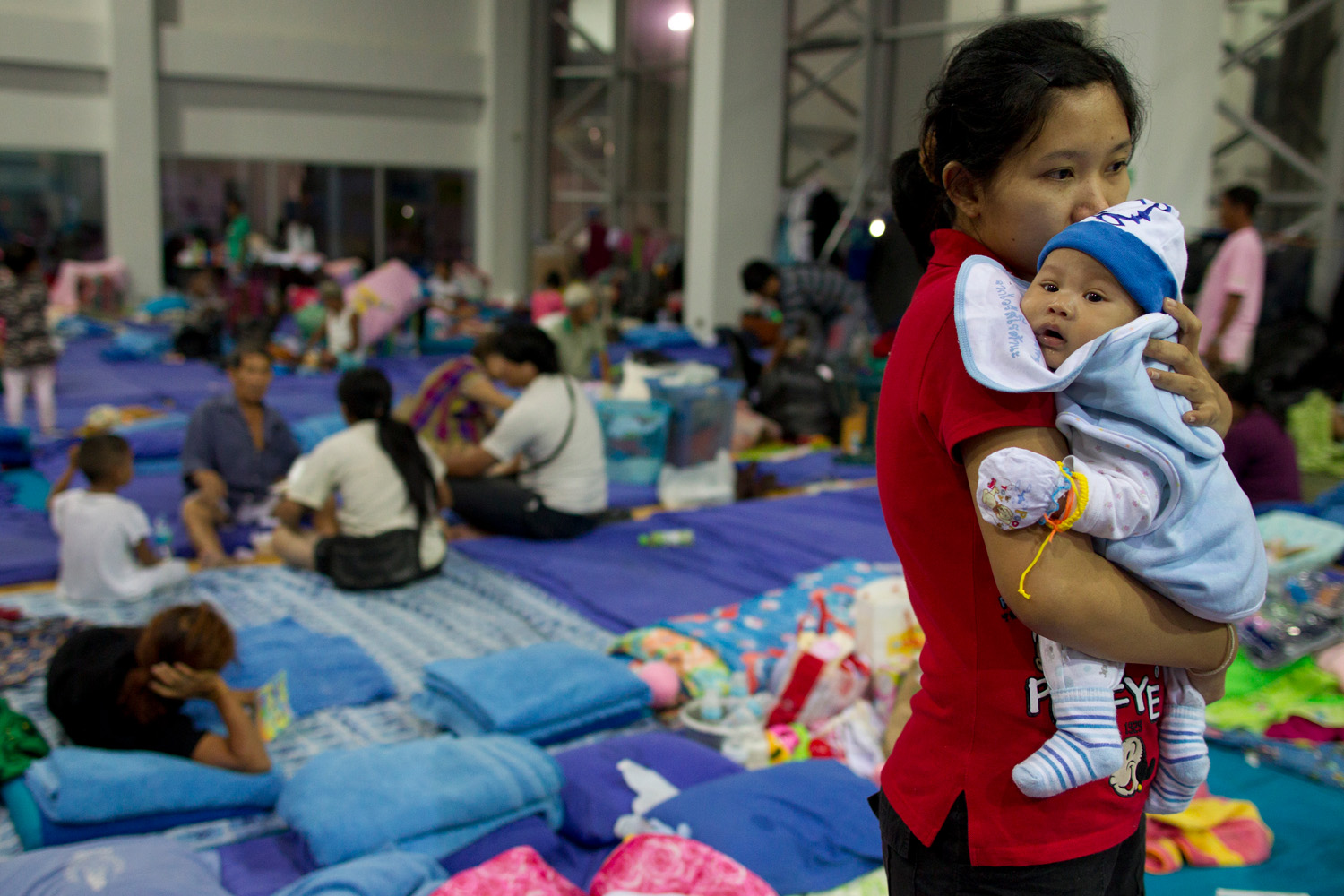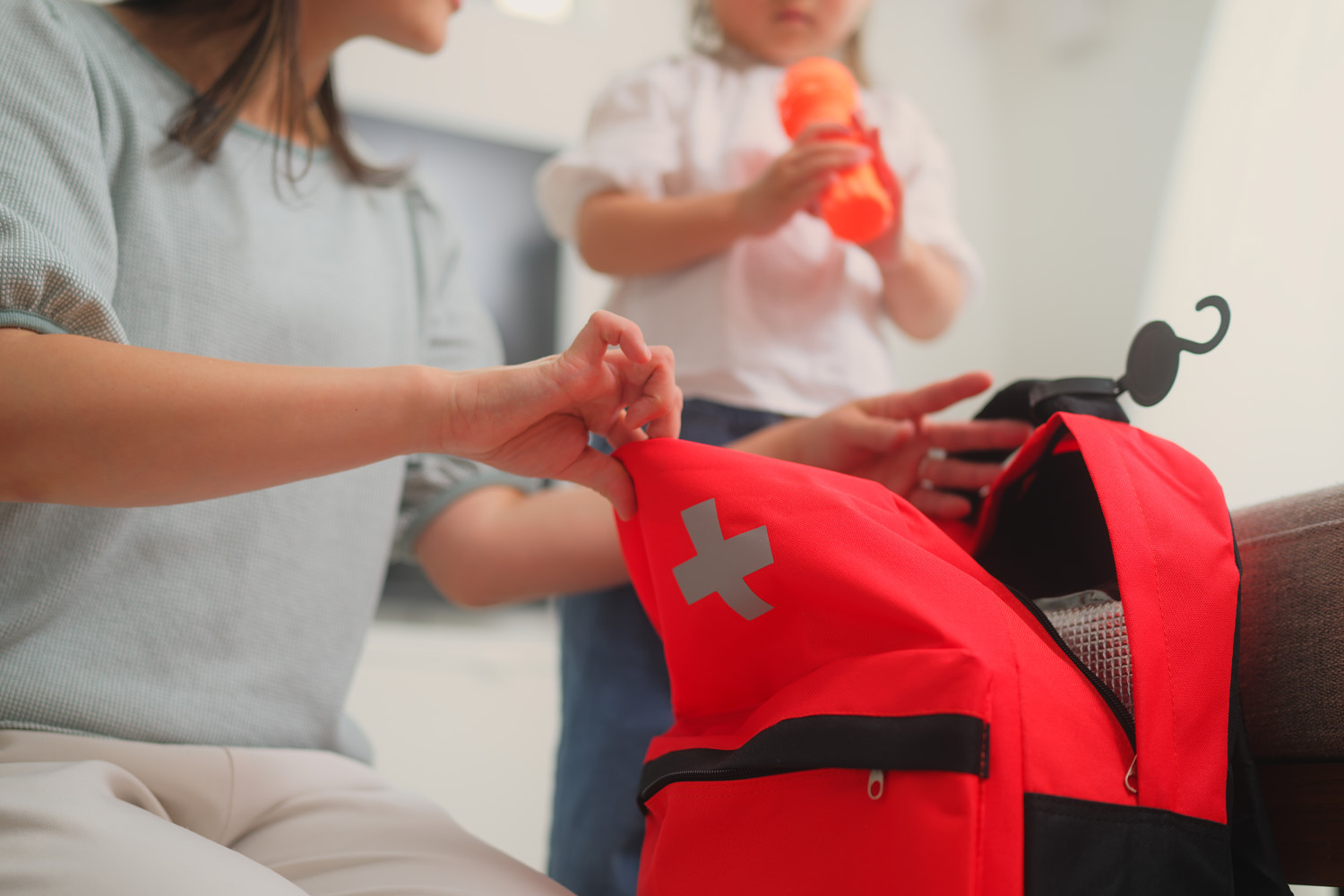How to Create a Family Emergency Plan

Editor's note: This post was originally published April 2, 2021, and has been updated for accuracy, comprehensiveness and freshness on October 1, 2025.
It's 2:30 AM when the tornado sirens start wailing. Your family scrambles out of bed, hearts racing, trying to remember where the flashlight is and whether the emergency supplies are still in the basement. In those crucial moments, panic takes over and precious time is lost figuring out what to do next.
Emergencies can strike anyone, anywhere, at any time. Whether it's a natural disaster, power outage, or unexpected crisis, being unprepared can lead to confusion, fear, and potentially dangerous decisions when every second counts.
To help you feel better prepared, we’ve built this guide to creating a family emergency plan that protects your loved ones and brings peace of mind. We'll walk you step-by-step through building a family plan for disaster that's tailored to your unique situation and needs – including legal issues!

Why every family needs an emergency plan
When disaster strikes, there's no time to figure things out on the spot. Having a plan in place before an emergency occurs is the difference between confident action and chaotic confusion.
Recent years have seen a dramatic increase in natural disasters, extreme weather events, and other emergencies. From hurricanes and wildfires to cyber-attacks and power grid failures, the threats to our communities continue to evolve and intensify.
The goal of any family emergency plan isn't just survival—it's about protecting your loved ones while maintaining clear thinking and quick decision-making when time is critical. A well-prepared family can respond faster, stay calmer, and keep everyone safer during those crucial first moments of any emergency.
What should a family emergency plan include?
Every effective family safety plan should address these four essential components:
Communication strategy
- Emergency contact information for all family members
- Primary and backup methods of reaching each other
- Instructions for reconnecting if separated
Meeting locations
- One location near your home for sudden emergencies
- One out-of-area location in case your neighborhood is affected
Individual responsibilities
- Specific roles for each family member so everyone knows their job
- Age-appropriate tasks that help children feel prepared instead of scared
Special considerations
- Medical needs and medications for family members
- Plans for elderly relatives, young children, and pets
- Important documents and financial information

Family emergency plan checklist with step-by-step guide
Follow this comprehensive checklist to build your family plan for emergency preparedness from the ground up.
Step 1 – Identify common risks in your area
Start by understanding the emergencies most likely to affect your region. Different areas face different threats—coastal families prepare for hurricanes while mountain communities focus on wildfires or winter storms.
Research your local risks through:
- Your city or county emergency management website
- FEMA's disaster maps and regional information
- Local weather service warnings and historical data
- Community emergency preparedness resources
Create a list of the top 3-5 emergencies your family should prepare for. This helps you focus your planning efforts on the most realistic scenarios.
Step 2 – Assign emergency roles to family members
Give each person a specific responsibility so everyone knows exactly what to do. Clear roles prevent confusion and ensure nothing important gets forgotten during high-stress moments.
Example role assignments:
- Adult 1: Grab the emergency kit and important documents.
- Adult 2: Account for all family members and pets.
- Teenager: Help younger siblings and assist with emergency supplies.
- Younger children: Stay with designated adult and bring comfort items.
Remember to involve children in age-appropriate ways. When kids understand their role in the family emergency plan, they feel more confident and less frightened.
Step 3 – Choose emergency meeting places
Select two meeting locations that serve different purposes:
Primary location (close to home):
- A neighbor's house, nearby school, or community center
- Easy to reach on foot from your home
- Known to all family members
Secondary location (out of area):
- A relative's home, friend's house, or designated shelter
- Far enough away to be safe if your entire neighborhood is affected
- Accessible by car or public transportation
Make sure every family member knows the exact addresses and how to get to both locations.
Step 4 – Create a family communication plan
Staying connected during emergencies can be challenging when phone lines are jammed or cell towers are down. Your communication plan should include multiple ways to reach each other.
Essential communication elements:
- Emergency contact cards for each family member's wallet or backpack
- Out-of-state contact person (long-distance calls sometimes work when local calls don't)
- Social media check-in plans for confirming safety
- Text messaging options (texts often work when calls don't)
- Meeting place information if electronic communication fails
Store this information in multiple places and make sure everyone memorizes the most critical phone numbers.

Step 5 – Assemble your survival kit
Have you ever asked the question, “What would you need in a survival kit?” Your emergency supplies should sustain your family for at least 72 hours, though many experts recommend preparing for up to two weeks.
So, what are 20 items you need to have in an emergency kit? Here are the most critical supplies every family needs:
Basic survival items:
- Water (1 gallon per person per day for 3 days)
- Non-perishable food for 3 days
- Battery-powered or hand-crank radio
- Flashlight and extra batteries
- First aid kit and manual
Personal and family items:
- Prescription medications (7-day supply)
- Important family documents (copies)
- Cash and credit cards
- Emergency contact information
- Local maps and whistle for signaling help
Tools and supplies:
- Multi-tool or Swiss Army knife
- Duct tape and plastic sheeting
- Matches in waterproof container
- Fire extinguisher
- Sleeping bags and warm clothing
Hygiene and comfort:
- Personal hygiene items
- Feminine supplies and diapers
- Paper plates, cups, and plastic utensils
- Comfort items for children
- Pet supplies if applicable
Store your emergency kit in a portable, easy-to-carry container and keep it in an accessible location that all family members know about.
Step 6 – Practice and review regularly
A plan that's never practiced is just wishful thinking. Schedule regular family emergency drills to test your plan and identify any problems before a real emergency occurs.
Practice different scenarios:
- Evacuating your home in under 10 minutes
- Meeting at your designated locations
- Using your communication plan
- Accessing and using emergency supplies
Review and update your family emergency plans every 6-12 months, or whenever your family situation changes. Update contact information, refresh expired supplies, and adjust the plan as children grow older.
Real-world family emergency plan examples
Family with toddlers: The Martinez family has twin 3-year-olds and focuses their plan on keeping the children calm and safe. Their emergency kit includes extra diapers, comfort items, and child-safe flashlights. Dad's job is to grab the kids while Mom gets the emergency bag and formula supplies.
Multi-generational household: The Chen family lives with elderly grandparents who have mobility issues. Their plan includes wheelchair-accessible meeting locations, medical equipment backup power, and a communication system that works with Grandpa's hearing aids. They've practiced evacuating using their wheelchair ramp multiple times.
Pet-loving family: The Johnson family has three dogs and two cats, so their plan includes pet carriers, animal supplies, and a list of pet-friendly shelters. They've identified which family member is responsible for each pet during an evacuation and keep leashes and carriers easily accessible.
What are the 5 components of an emergency plan?
Every comprehensive emergency plan should include these five essential components:
1. Communication strategy: Clear methods for family members to contact each other and report their safety status during and after an emergency.
2. Evacuation and shelter plan: Predetermined routes and destinations for leaving your home safely, plus backup shelter options if returning home isn't possible.
3. Emergency contacts and documentation: Complete contact information for emergency services, family members, doctors, insurance companies, and important personal documents stored safely.
4. Survival supplies: Essential items needed to sustain your family for at least 72 hours, including food, water, medical supplies, and emergency equipment.
5. Practice and maintenance routines: Regular drills to test your plan and scheduled reviews to keep information current and supplies fresh.
Each component works together to create a comprehensive family plan for disaster that covers all aspects of emergency preparedness and response.

Don't wait — make your family emergency plan today
The best time to create your family safety plan was yesterday. The second-best time is right now.
A small investment in planning today can save lives tomorrow. Emergencies don't wait for convenient timing, and the peace of mind that comes from being prepared is invaluable.
Start with the most critical elements—communication and meeting places—then build your emergency kit and practice your plan. Even a basic plan is infinitely better than no plan at all.
Legal protection during emergencies
When disasters strike, families often face unexpected legal challenges—from insurance disputes to temporary housing issues and documentation problems. LegalShield Members have access to experienced attorneys who can help navigate legal issues that arise during and after emergencies.
Whether you need help with insurance claims, temporary custody arrangements, or understanding your rights during evacuations, LegalShield provides affordable access to legal advice when you need it most. Our personal legal plans offer coverage starting at low monthly rates, giving you one less thing to worry about during stressful times.
Get Protected Today → Visit LegalShield.com to learn how affordable legal protection can be part of your family's emergency preparedness strategy.
Written by Elyse Dillard, Content Specialist at LegalShield. Elyse creates educational resources about legal and identity theft protection services. She works to make complex legal concepts more accessible to readers and has contributed to numerous articles on the LegalShield blog.
Pre-Paid Legal Services, Inc. ("PPLSI") provides this blog as a public service and for general information only. The information made available in this blog is meant to provide general information and is not intended to provide legal advice, render an opinion, or provide a recommendation as to a specific matter. The blog post is not a substitute for competent legal counsel from a licensed professional lawyer in the state or province where your legal issues exist, and you should seek legal counsel for your specific legal matter. All information by authors is accepted in good faith. However, PPLSI makes no representation or warranty of any kind, express or implied, regarding the accuracy, adequacy, validity, reliability, availability, or completeness of such information. The materials contained herein are not regularly updated and may not reflect the most current legal information. No person should either act or refrain from acting on the basis of anything contained on this website. Nothing on this blog is meant to, or does, create an attorney-client relationship with any reader or user. An attorney-client relationship may be formed only after the execution of an engagement letter with an attorney and after that attorney has confirmed that no conflicts of interest exist. Nothing on this website, or information contained or transmitted by this website, is intended to be an advertisement or solicitation. Information contained in the blog may be provided by authors who could be a third-party paid contributor.
PPLSI provides access to legal services offered by a network of provider law firms to PPLSI members through membership-based participation. Neither PPLSI is not a law firm, and its officers, employees or sales associates do not directly or indirectly provide legal services, representation, or advice.



